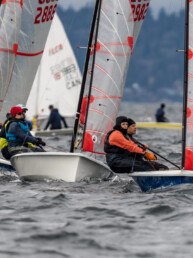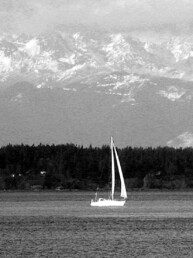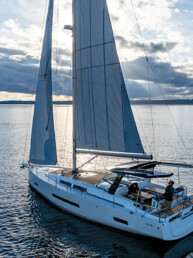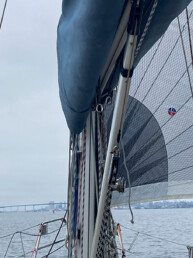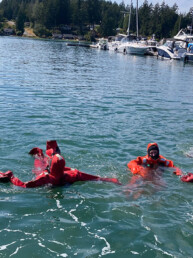I spend an inordinate amount of time thinking about increasing participation in sailing and boating. From my years running a sailing club and school, to a long tenure as a member and chair or the Northwest Marine Trade Association’s Grow Boating Committee, to life now as an employee of a maritime non-profit with diverse regional growth initiatives, and, of course, as your editor — I might get locked into the idea that success looks like bigger events.
To be sure, it’s a major priority for me as I put together our regional racing calendar, SARC, which comes out with this issue. My role in the SARC process is founded on a personal and professional motivation to help organizers arrange their events to reduce competition with one another and, thus, encourage participation around the region by allowing more boats to sail more events. I often declare that more racers equals more fun. Generally, I stand behind that. It’s a great chicken-egg question — do the biggest events in the region draw more boats because they are the most fun, or are they fun because they draw a huge number of boats?
I caught myself in the echo chamber of my own outlook this month when I started reading new 48° North columnist Solvig Sayre’s story sharing observations and opportunities that might improve youth sailing in the Pacific Northwest (page 22). Solvig is the new Youth Sailing Director at The Sailing Foundation, and it is her opinion that, for youth sailing to grow and thrive here, the region really needs more small, casual events that welcome kids.
The reasoning is sensible. Big events can offer the richest rewards for those at the front of the fleet, while smaller events actually grow the pool of those who love sailing by catering more equitably to the needs and desires throughout the fleet. She also sees value in keeping it super local, reducing the time, inconvenience, and expense of travel. It all decreases pressure, increases ease, and boosts the fun factor.
Hit the brakes! This grassroots vibe is genuinely the opposite of my default idea. If I had my way, most weekends would be a huge regional party as scores of boats move from port to port, racing together in big fleets as much as possible. Still, as I let it sink in, Solvig’s rationale really resonated, and I appreciated the valuable divergent perspective. Maybe having a bunch of events on the same weekend with various organizers serving a specific, local population of sailors is exactly the right way to grow participation.
In a way, Solvig’s ideas led me to recall my sailing club days. We had a really busy racing program that grew a ton. We were fortunate to have the local yacht clubs running races we could join, but often it felt like the sailing club teams were mainly just racing each other. We organized everything to fit the needs of a mostly-new-to-racing audience. People progressed as sailors, more folks joined, and we had a heck of a good time — all in small, local fleets.
For me, these ideas serve as yet another reminder that there’s not going to be a single approach, no magic bullet, that grows participation in boating and sailing. Big events help, and so do small ones; and fun is a worthy focus. Broadly speaking, it reinforces the idea that more diversity of sailors, events, and interests will better the waterborne communities of the Pacific Northwest. In other words, as you peruse the 2024 SARC, don’t only circle the big events!
I’ll see you on the water,
Title background image courtesy of The Sailing Foundation.
Joe Cline
Joe Cline has been the Managing Editor of 48° North since 2014. From his career to his volunteer leadership in the marine industry, from racing sailboats large and small to his discovery of Pacific Northwest cruising —Joe is as sail-smitten as they come. Joe and his wife, Kaylin, have welcomed a couple of beautiful kiddos in the last few years, and he is enjoying fatherhood while still finding time to make a little music and even occasionally go sailing.

